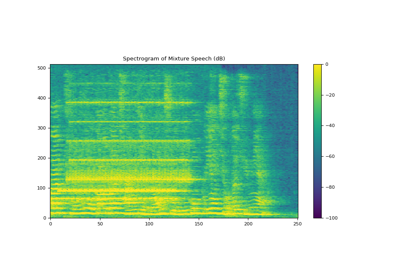PSD
- class torchaudio.transforms.PSD(multi_mask: bool = False, normalize: bool = True, eps: float = 1e-15)[source]
Compute cross-channel power spectral density (PSD) matrix.
- Parameters:
- Tutorials using
PSD:
- forward(specgram: Tensor, mask: Optional[Tensor] = None)[source]
- Parameters:
specgram (torch.Tensor) – Multi-channel complex-valued spectrum. Tensor with dimensions (…, channel, freq, time).
mask (torch.Tensor or None, optional) – Time-Frequency mask for normalization. Tensor with dimensions (…, freq, time) if multi_mask is
Falseor with dimensions (…, channel, freq, time) if multi_mask isTrue. (Default:None)
- Returns:
- The complex-valued PSD matrix of the input spectrum.
Tensor with dimensions (…, freq, channel, channel)
- Return type:

